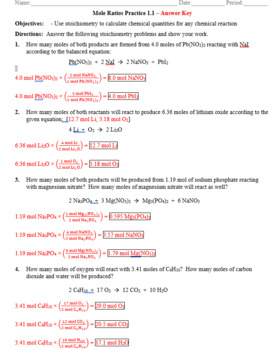
The method of continuous variations could also be used in reactions involving change in color intensity, the mass of a precipitate formed, or the volume of a gas created.Along the downward slope, it is sodium sulfite. Along the upward slope of my graph, the limiting reagent is sodium hypochlorite.The temperature is the dependent variable, so whatever ratio is chosen to be reacted, a precise answer will come out based on what was put in. The person choosing the ratios of each reactant to use in the experiment is limited in finding the exact answer. Volume limits precision because it is the independent variable.It prevents the reaction from reacting even more because it gets used up the fastest.

A limiting reagent is the compound in an equation that is completely used up.The reactants had to stay at a constant total volume because if they weren't the amount of heat produced would not directly correlate with the amount of the reactants that reacted, it wouldn't be even and line up.It all works out in the end because not only is there the best ratio found from proof in the reaction, but the lines of best fit on the graph provides the same answer, so it is known that the correct answer was arrived at. When the optimum ratio is acquired, the greatest amount of reactants is consumed, forming the largest amount of product possible given the starting volumes of the reactants. This method is called the method of continuous variations. As long as the total volume is kept constant at 50mL, any combination of the two reactants can be tested to find the best two volumes that work best together.

This experiment is a sort of guess-and-check method of finding this stoichiometric ratio. During a reaction, the maximum amount of reactants that can be used will be used, and the chemical equation is left with the optimum ratios of moles used. All of the reactions occurring are exothermic, therefore the heat produced will be directly proportional to the amount of reaction that occurs. The higher the point is on the graph, meaning the higher the temperature produced, the more reactants being used between the two substances, sodium hypochlorite and sodium sulfite. The answer is evident when the temperatures produced by each reaction are plotted on a graph. By combining different ratios of the two given chemicals in this reaction, a fairly precise stoichiometric ratio is found.


 0 kommentar(er)
0 kommentar(er)
